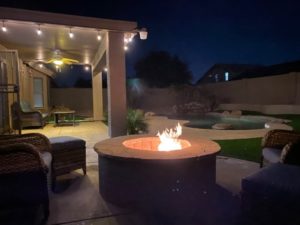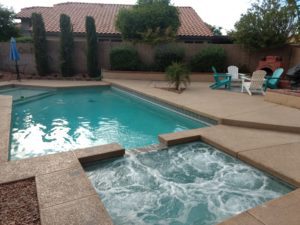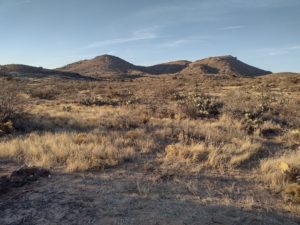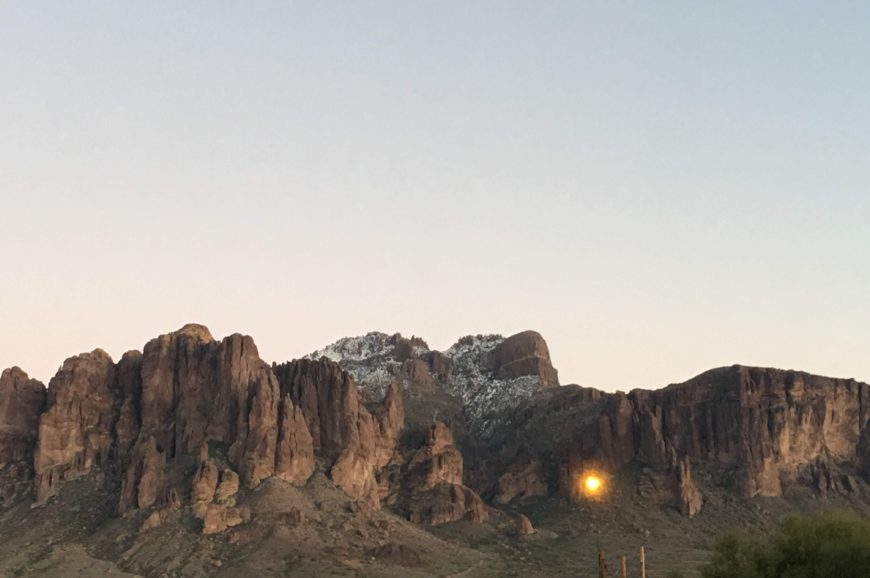Arizona Winters: What are they really like?
When most people think of Arizona, a few things come to mind: cacti, scorching temperatures, and rattlesnakes. But the Sonoran desert only takes up about half of the state, mainly the southern region. The northern half of the state consists of grasslands, coniferous forests, and tundra. Tourists and ski enthusiasts flock to Flagstaff every winter to hit the slopes. Meanwhile, snowbirds pour into the Phoenix Metro Area from the Midwest to escape the harsh, below-freezing weather and take advantage of the milder climate.
So what is Phoenix weather like in January?
Rain!
Phoenix sees a modest amount of rainfall in the winter months. February and early March often see the most. The average rainfall is typically very low compared to the downpours that happen during monsoon season, so the risk of flash floods is also low.
“Arizona Cold” feels freezing to us…
You may hear this phrase occasionally, or see evidence of it if you visit Phoenix during the holidays. When the temperatures begin to dip down into the 70s, it feels chilly to those of us who were raised in(or have become acclimated to) the scorching 110+ summer days. You’ll start to see long sleeves and sweatshirts. December is usually the coldest and cloudiest month of the year, and as it gets closer to Thanksgiving, we’ll break out the jackets and hats.
…but know that sometimes we do get legitimate cold snaps.
Every three to four years or so, we have a colder than normal winter. The nighttime temperatures will drop down into the low thirties, triggering freeze warnings. Residents with gardens and outdoor landscaping scramble to cover their plants with sheets or towels to keep them from literally freezing to death. Fireplaces get heavy use during this time of year, as do fire pits.

Not helping things is the air: Phoenix winters often have extremely low humidity. The dryness makes the air feel even colder and can wreak havoc on your sinuses if you’re used to a more humid climate. Pack some nasal spray or a neti pot just in case.
No big deal! We’ll just crank up the pool heater!

Not so fast! Heated pools are nice during the winter, but most pool pumps won’t operate if the air temperature drops below 49 degrees. This is by design, because the heat pump can become damaged or break if it runs in the cold. Your best bet is to head to the jacuzzi, if your property has one, or inside in front of the fireplace.
So what’s it like up north?
The high country(Show Low, Flagstaff, Snowflake, etc.) sees lots freezing temperatures and snow. Sometimes there’s so much of it the Department of Transportation will issue chain controls over the summit. This means if you don’t have chains or AWD/4WD, they won’t let you through due to the hazardous conditions and ice on the roadways. Particularly harsh weather forces complete road closures, and you could be forced to turn around. Check the weather and traffic reports before you leave, and pack your vehicle with emergency blankets and supplies as a precaution.
Just because there isn’t snow doesn’t mean it’s warm! Lower elevations, such as Agua Fria and Bloody Basin National monument, often drop to the 30s and 40s at night. If the wind picks up it feels even colder. At night, the Grand Canyon plummets to below zero.

So what should we do if we’re visiting Arizona in the winter?
Check the weather reports to see what you might expect during your stay. Weather in Arizona can change quickly, so pack a warmer jacket and change of clothes just in case. If you’re concerned about the temperatures dropping, ask the manager of your rental about extra blankets or heaters. A good vacation rental will have at least one extra blanket per bedroom. Many properties in Phoenix have fire pits and gas fireplaces as well.
With a little bit of planning and research, you’ll be able to enjoy your stay in Arizona no matter what the weather does!

